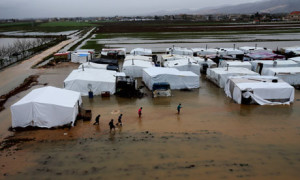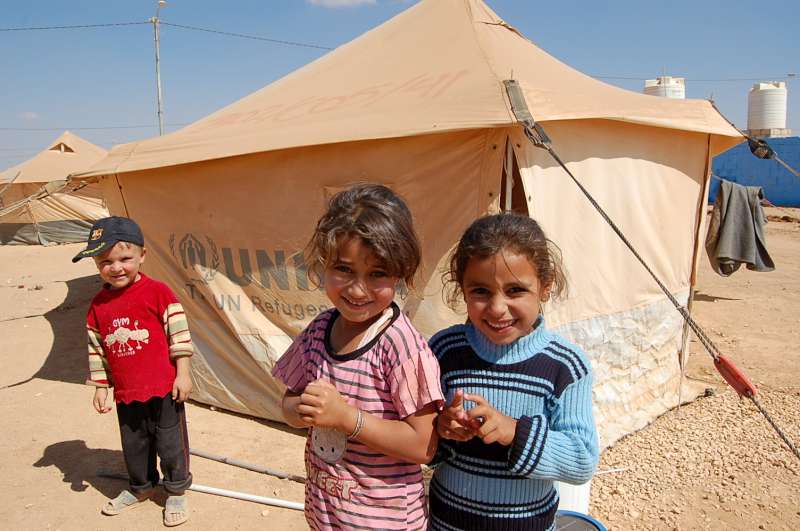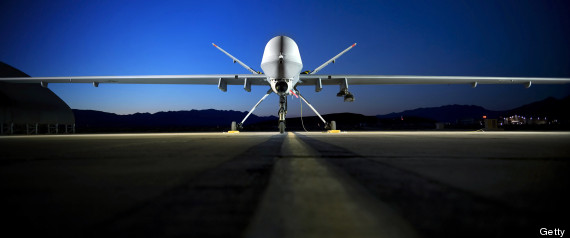In late March, a Syrian refugee in Lebanon set herself ablaze in front of a UN building in protest of the organization’s inadequate aid services to Lebanon’s growing population of Syrian civilians. While recovering in hospital, she told Al Jazeera, “they burned my heart before they burned my body.”
 Nearly half of Syria’s population has been displaced. The UN Office for the Coordination of Humanitarian Affairs’ latest figures reveal 6.5 million displaced within Syrian borders, while 2.5 million are under refugee status in surrounding countries like Turkey, Jordan, Iraq, and Lebanon. The Syrian Observatory for Human Rights announced last week that the death toll as a result of the Syrian crisis has risen above 150,000.
Nearly half of Syria’s population has been displaced. The UN Office for the Coordination of Humanitarian Affairs’ latest figures reveal 6.5 million displaced within Syrian borders, while 2.5 million are under refugee status in surrounding countries like Turkey, Jordan, Iraq, and Lebanon. The Syrian Observatory for Human Rights announced last week that the death toll as a result of the Syrian crisis has risen above 150,000.
The World Health Organization (WHO) has also confirmed numerous cases of polio within the refugee population, “where now over 100 children show symptoms of the disease.” Syria had been polio-free since 1999.
Laboratory tests traced the new strain to Pakistan but it remains unclear whether the virus was brought by foreign militant groups fighting alongside (and sometimes against) Syrian rebels, or simply cultivated within an increasingly vulnerable refugee population with limited access to clean food and water.
As the WHO and UNICEF launched a large-scale vaccination campaign this month, activists admit, “immunization activities have been significantly constrained by the violence and access restriction.”
“With large-scale population movements ongoing within and between Syria and surrounding countries, it is very unlikely that it will ever be possible to state definitively how the virus came into the country,” the WHO’s Oliver Rosenbauer told Time last November.
Struggles of a host community
According the UN statistics, half of the Syrians in Lebanon are under the age of eighteen, and the Lebanese state-funded school system has made efforts to accommodate. Only two years ago, state schools across Lebanon accommodated only 300,000 children.
Eighty schools have adopted an afternoon-shift policy since January to condense school days and take advantage of classrooms that would otherwise be empty during recesses and lunch breaks.
An exiguous country situated along the Mediterranean coast, Lebanon’s entire population only amounts to approximately 4.5 million people. Last week, the UN High Commissioner for Refugees announced that since the start of the Syrian crisis, over one million Syrian refugees have entered Lebanon and continue to have significant human and financial impacts on the country
Incumbent President Michel Suleiman pleaded with the international community for additional assistance to cope with the influx of refugees at the UN General Assembly last September. During his speech, the President referred to the “unprecedented increase in the numbers of incoming refugees from Syria” as Lebanon’s “most pressing and biggest burden”. Refugees, almost entirely Palestinian and Syrian, now constitute approximately a quarter of Lebanon’s entire population.
 As a veteran host community, the Lebanese already have a history of accommodating displaced populations. With the narrative of the Palestinian struggle deeply ingrained into Lebanese political culture, the influx of Syrian refugees has reignited debate over Lebanon’s role in accommodating those fleeing from violence and discrimination in the region. Estimates pin the current number of Palestinian refugees in Lebanon at between 260,000 – 300,000, with some families having lived in refugee camps for nearly sixty years due to Israeli occupation.
As a veteran host community, the Lebanese already have a history of accommodating displaced populations. With the narrative of the Palestinian struggle deeply ingrained into Lebanese political culture, the influx of Syrian refugees has reignited debate over Lebanon’s role in accommodating those fleeing from violence and discrimination in the region. Estimates pin the current number of Palestinian refugees in Lebanon at between 260,000 – 300,000, with some families having lived in refugee camps for nearly sixty years due to Israeli occupation.
The Lebanese have managed to maintain a delicate sectarian balance since the end of the country’s protracted civil war in 1990, but the significant inflow of refugees threatens the existing harmony.
In Lebanon, the arrival of the one-millionth refugee registration came as a “devastating milestone.”
Lebanon’s economy has also taken a hit as a result of the conflict next door, and has undergone significant drops in investments, trade, and tourism. A report published last week by the World Travel and Tourism Council outlines the contributions of the tourism industry to Lebanon’s economy despite the political conditions that hinder further investment, but also focuses on the opportunity costs associated with the Syrian crisis.
The World Bank estimates the impact of the Syrian crisis on Lebanon’s economy at a $2.5 billion deficit. The report reaffirms tourism as “a key economic pillar and a primary growth driver, which must be activated to restart the growth cycle and take the country out of its current stalemate.”
Representative of nearly 20% of Lebanon’s GDP in 2013, the influx of Syrian refugees has undoubtedly reduced tourism industry figures. Lebanon’s The Daily Star outlines the difficulties faced by the hospitality industry in view of the Syrian crisis, including the loss of both tourists and investments from various Persian Gulf nations.
“Usually, 75 percent of our business comes from the Gulf region but unfortunately our hotel lost 90 percent of these visitors this year,” a hotel operator told The Daily Star.
The Syrian conflict has slowly developed into a regional crisis that requires a broad consensus among regional powers to help draw military confrontations to a close. And whether through economic pressures or terrorist attacks, various facets of the crisis have dragged many Lebanese into the conflict.
Rebel encroachment along western Lebanon and cross-border confrontations have intensified, as well as several suicide bombings concentrated on districts supportive of Hezbollah.
Well aware of the close relationship between the Syrian government and Hezbollah, many Syrian rebels included Hezbollah’s downfall in revolutionary rhetoric from the outset of the crisis. In 2012, Syrian rebel leaders vowed to take the fight into southern Beirut should support for Assad persist. Since then, sectarian Jihadist cells in Syria have claimed victims in attacks in Lebanon.
As of March 2014, the UNHCR reports that only 24% of the funds necessary to assist Lebanon cope with the over one million Syrian refugees currently within its borders have been collected, accounting for just over $300 million of the $1.3 billion estimate.
With no political end in sight, the case of displaced Syrians across the region continues to degenerate. Particularly in Lebanon, the arrival of the one-millionth refugee registration came as a “devastating milestone.”
Yahya, 19, who became the millionth Syrian to register in Lebanon, fled with his family from the city of Homs and lost his father in the process. “I feel sad because this means that 1 million fled here before me to suffer together,” he explained.




